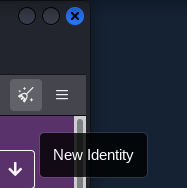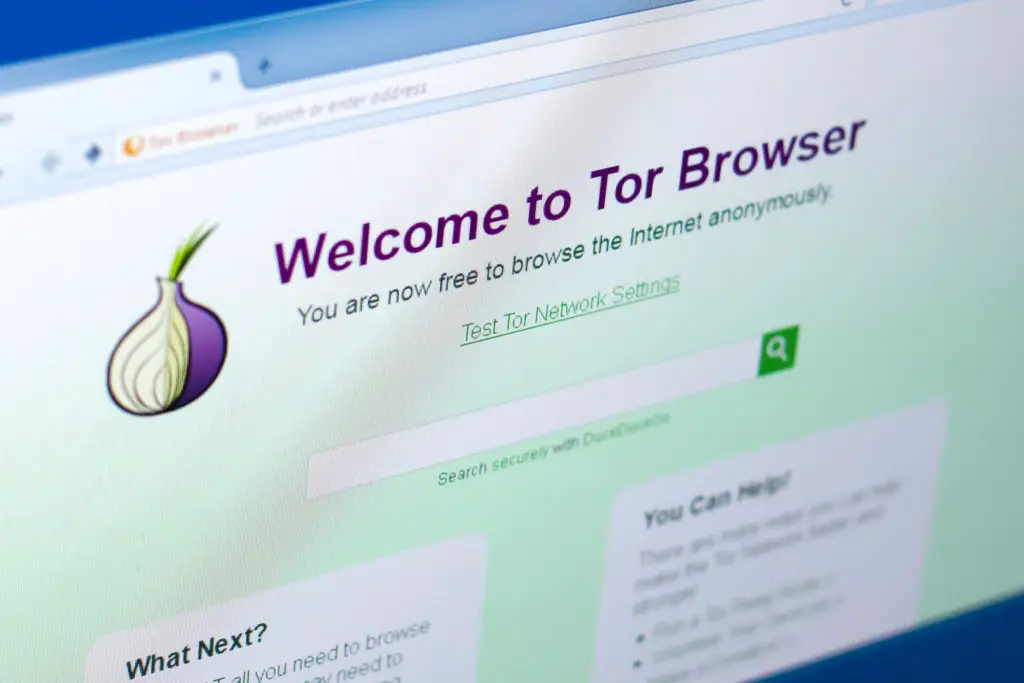The Tor network is used to protect your privacy and anonymity. But because of its design, using Tor can sometimes be slower than what many users are used to with unprotected connections to the internet. Fortunately, here are 5 tips on how to make Tor faster.
- Keep Your Browser Up To Date
- Use a New Tor Circuit
- Create a New Identity
- Optimize Your Tor Settings
- Volunteer To Set Up a Bridge Relay
Before we dig into these tips to improve your internet connection through the network, you need to understand the problem.

Why Is Tor Slow?
Tor works by routing internet traffic through a network of servers (also known as “nodes” or “relays”) so that it’s difficult to trace the source of the internet activity back to the user.
A device like your phone or laptop talks directly to a destination web server on a regular browser. Your online activity can be monitored by anyone tracking your connection. This includes your internet service provider, the operators of the websites you use, governments, and third-party trackers and ads.
Using Tor hinders anyone watching your connection from knowing what websites you visit. It does this by sending your traffic through three random relays in the Tor network so that only the last relay in the circuit (the “exit relay”) sends out traffic into the public internet.
Your user data is encrypted when it passes through each node of the Tor network. Each relay knows only the location of the immediately preceding and following nodes.
This anonymous communication technique is known as onion routing. Each network node “peels” away a single layer of the encrypted data to uncover where to send the data to next (and the name Tor is short for The Onion Router).
This indirect and wrapped connection between your device and a destination server causes the slowness due to three main factors:
- The encrypting and subsequent decrypting at each node to discover the next destination
- The network path between you, each node, and the destination server or web page
- The processing speed of the volunteer server nodes handling the traffic
The design of the Tor network relies on these intermediary steps to protect your privacy. Even the Tor Browser itself can be inherently slower compared to other browsers.
In Practice:
After you install Tor Browser and open a browser session for the first time, you’re presented with a Connect to Tor window. This Tor connection needs a few moments to be established. Remember that Tor Browser routes your traffic over the Tor network.
With this in mind, let’s look at ways to make Tor run faster.
How to Make Tor Faster
Most users have their first encounter using Tor via a web browser. The Guardian Project recommends using the official Tor Browser. Still, browsers like Brave include a private Tor tab which can be another good on-ramp for experiencing Tor.
1. Keep Your Browser Up to Date
In general, keeping your web browser up to date is vital for getting the latest security and performance improvements. If you use an outdated version of Tor Browser, you may be vulnerable to serious security flaws that compromise your privacy.
An update may also include performance improvements that boost slow speeds and your experience web browsing. Tor is much faster than it used to be, and that’s because of the ongoing work being done to improve network performance.
Tor Browser will prompt you to update the software once a new version has been released. You can choose whether you want to update automatically or manually.
2. Use a New Tor Circuit
A Tor circuit is the path your data takes through the Tor network to reach its destination. This path usually consists of three randomly selected nodes. The first relay in the circuit is known as the guard, but the entry point could also be a bridge relay. The other nodes are called the middle relay and the exit relay.

When you click the button for a new Tor circuit, you are essentially trying to refresh your connection to a website. According to the documentation on using a new Tor circuit:
This option is useful if the exit you are using is unable to connect to the website you require, or is not loading it properly. Selecting it will cause the currently active tab or window to be reloaded over a new Tor circuit. Other open tabs and windows from the same website will use the new circuit as well once they are reloaded. This option does not clear any sensitive information or unlink your activity, nor does it affect your current connections to other websites.
3. Create a New Identity
Tor Browser also gives the option to create a new identity. You can use this feature to start fresh with your browsing experience and prevent any new activity from being linked to what you were doing before.

Creating a new identity will close all windows and tabs, clear all private information such as cookies and browsing history, and use new Tor circuits for all connections. So just like with the previous option, creating a new identity can be helpful if you’re having trouble connecting to a particular site.
Note:
When you reset your identity, you’re opening a new browser window. You lose all of the tabs you had opened before, whereas if you used the “New Tor Circuit for this Site” option, you would still have access to your open tabs.
So you can think of the difference between using a new Tor circuit and creating a new identity like refreshing your tab vs. restarting your browser, respectively.
4. Optimize Your Tor Settings
If you’ve already tried all of the previous tips, you can also check your Tor Browser settings.
In the settings menu, on the general tab, scroll down until you see a section titled “Performance,” and then make sure you’ve checked off “Use recommended performance settings.” This will cause Tor Browser to automatically use settings that work best with your computer, based on your computer’s hardware and operating system.
You can also modify these settings yourself if you desire, based on Firefox settings (Tor Browser is actually a modified version of Firefox, specifically designed for use with the Tor network).
If you uncheck “Use recommended performance settings,” you can choose whether or not you want to use hardware acceleration when available. You can also set the content process limit – which is a way to improve performance when using multiple tabs, but with the trade-off of using more memory.
5. Volunteer To Set Up a Bridge Relay
This support page about how to make Tor Browser run faster provides more background on relays in the Tor network:
The Tor network has over a million daily users, and just over 6000 relays to route all of their traffic, and the load on each server can sometimes cause latency. And, by design, your traffic is bouncing through volunteers’ servers in various parts of the world, and some bottlenecks and network latency will always be present. You can help improve the connection speed of the network by running your own relay, or encouraging others to do so.
The Tor network relies on volunteers to donate bandwidth. The more people who run relays, the better the Tor network.
However, the IP address of Tor relays is public. One of the ways Tor can be blocked by governments is by blocklisting the IP addresses of these public Tor nodes.
Suppose you live in an area where the government restricts access to Tor, or you think that your Internet Service Provider is throttling your bandwidth. In that case, you try setting up your own bridge relay. Tor bridges are relays in the network that are not listed in the public Tor directory, making it harder for ISPs and governments to block them.

Is It Still Worth Using Tor?
If you’ve gone through all of these tips on how to make Tor faster, and you’re still not satisfied with its internet speed compared to other browsers, you might be wondering if it’s worth it to continue.
Some users will value a smooth browsing experience more than Tor’s privacy benefit, and there’s nothing wrong with that. But that brings forward the question: What is the privacy benefit of using the Tor network for the average user?
Does using Tor by itself truly make you more secure online? It’s worth looking into, and it turns out the answer is… on its own, not really.
First, simply using Tor makes you stand out to anyone monitoring your network, like your Internet Service Provider or network administrator. This in itself can be revealing information, especially if any organization or government is on the lookout for suspicious activity. Unfortunately, the act of using Tor comes with an undeserved negative reputation for use in illegal activities. Until this prejudice of the project is overcome, the use of the Tor network is somewhat de-anonymizing itself.
The average user might not be worried about being identified. However, if you’re in a dangerous situation where secure communication is critical, using Tor may instead make you more likely to be vulnerable and investigated.
This report on Tor by the organization RestorePrivacy goes much more in-depth about all the ways that the Tor network isn’t actually as secure as it may seem.
Anybody can operate Tor nodes and collect your data and IP address. Tor has a history of malicious nodes collecting user information and infecting devices with malware. In addition, governments have many ways to compromise the network. It’s well documented that The Tor Project collaborates closely with the U.S. government and receives funding from various U.S. government agencies.
And that’s without even mentioning any ordinary user actions that could be putting your privacy at risk.
Remember, although it’s nearly impossible for most individuals or even governments to achieve perfect privacy, there are many actions you can take to protect your personal data and be more secure online.
Suppose you’re interested in a more secure and reliable browser that doesn’t compromise browsing speed or user experience. In that case, we’ve written before about why we think Brave is one of the best browsers for privacy and performance.
But despite some flaws with Tor, it can still be an excellent free privacy tool, especially when combined with other options.
For example, you can check out Tor-based tools like:
– OnionShare: An open-source tool that enables direct peer-to-peer file sharing over Tor. You can use this to securely and anonymously share files, host websites, and chat with friends.
– TailsOS: A portable operating system that protects against surveillance and censorship. The system is designed to be booted from a USB stick and to leave no trace of your activity on a computer when you shut the operating system down.
– Briar Messenger: Instant messenger over the Tor network. Briar can sync via Bluetooth or Wi-Fi if the internet’s down, keeping the information flowing in a crisis. Briar can sync via the Tor network if the internet’s up, protecting users and their relationships from surveillance.
Nothing is foolproof when it comes to privacy, but using the tools that work best for the situation often matters most. When used correctly and in conjunction with other tools, Tor can still be a great way to improve your online anonymity.
And as we alluded to earlier, more people using Tor benefits all network users. The Electronic Frontier Foundation puts it this way:
There’s some safety in numbers: if the only people using Tor are those who have a serious need for it then any use of Tor is suspicious. But if Tor gets used for everything from pizza orders to looking at funny cat photos then it is much less so.
